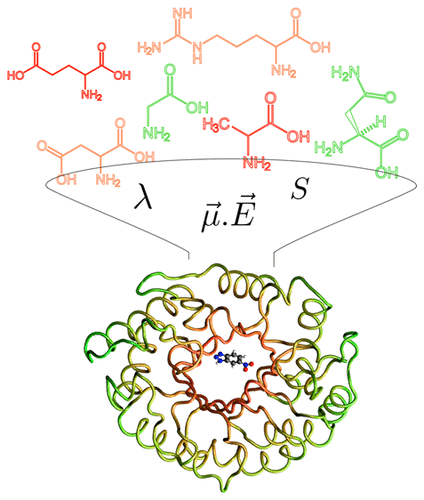当前位置:
X-MOL 学术
›
Chem. Rev.
›
论文详情
Our official English website, www.x-mol.net, welcomes your feedback! (Note: you will need to create a separate account there.)
Computational Design of Synthetic Enzymes.
Chemical Reviews ( IF 62.1 ) Pub Date : 2018-10-02 , DOI: 10.1021/acs.chemrev.8b00399 Valerie Vaissier Welborn 1, 2 , Teresa Head-Gordon 1, 2, 3
Chemical Reviews ( IF 62.1 ) Pub Date : 2018-10-02 , DOI: 10.1021/acs.chemrev.8b00399 Valerie Vaissier Welborn 1, 2 , Teresa Head-Gordon 1, 2, 3
Affiliation

|
We review the standard model for de novo computational design of enzymes, which primarily focuses on the development of an active-site geometry, composed of protein functional groups in orientations optimized to stabilize the transition state, for a novel chemical reaction not found in nature. Its emphasis is placed on the structure and energetics of the active site embedded in an accommodating protein that serves as a physical support that shields the reaction chemistry from solvent, which is typically improved upon by laboratory-directed evolution. We also provide a review of design strategies that move beyond the standard model, by placing more emphasis on the designed enzyme as a whole catalytic construct. Starting with complete de novo enzyme design examples, we consider additional design factors such as entropy of individual residues, correlated motion between side chains (mutual information), dynamical correlations of the enzyme motions that could aid the reaction, reorganization energy, and electric fields as ways to exploit the entire protein scaffold to improve upon the catalytic rate, thereby providing directed evolution with better starting sequences for increasing biocatalytic performance.
中文翻译:

合成酶的计算设计。
我们审查了酶从头计算设计的标准模型,该模型主要集中于活性位点几何结构的开发,该几何结构由优化了稳定过渡态的方向的蛋白质官能团组成,用于自然界中未发现的新型化学反应。它的重点放在嵌入在可调节蛋白质中的活性位点的结构和能量上,该蛋白质可作为物理载体,保护反应化学不受溶剂的侵蚀,通常可通过实验室指导的进化加以改进。我们还提供了对超越标准模型的设计策略的回顾,它更加强调了设计酶作为整体催化结构的重要性。从完整的从头酶设计实例开始,我们考虑其他设计因素,例如各个残基的熵,
更新日期:2018-10-02
中文翻译:

合成酶的计算设计。
我们审查了酶从头计算设计的标准模型,该模型主要集中于活性位点几何结构的开发,该几何结构由优化了稳定过渡态的方向的蛋白质官能团组成,用于自然界中未发现的新型化学反应。它的重点放在嵌入在可调节蛋白质中的活性位点的结构和能量上,该蛋白质可作为物理载体,保护反应化学不受溶剂的侵蚀,通常可通过实验室指导的进化加以改进。我们还提供了对超越标准模型的设计策略的回顾,它更加强调了设计酶作为整体催化结构的重要性。从完整的从头酶设计实例开始,我们考虑其他设计因素,例如各个残基的熵,


























 京公网安备 11010802027423号
京公网安备 11010802027423号